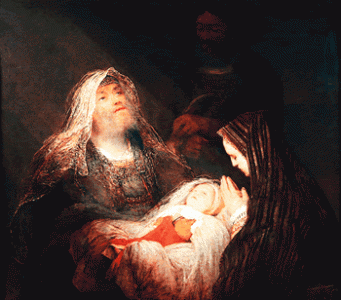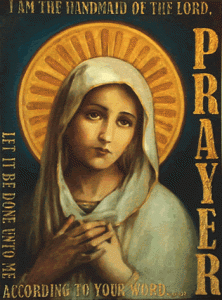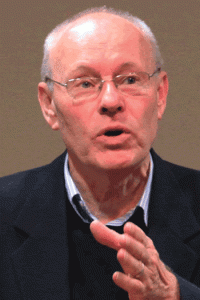A Reflection on Mary, Mother of God
Pablo Casals (1876-1973) was a Spanish-born cellist. He was also a lifelong opponent of fascism, a man who took every opportunity to speak out for freedom, even in the most threatening moments. He was forced to flee Spain in 1936. Twenty years later, on his 80th birthday, he told his assembled friends and guests: ‘The situation is hopeless, we must take the next step.’
Luke’s portrait of Mary, the mother of Jesus, suggests a similar disposition, though more deeply nuanced and greatly expanded.
There are at least eleven explicit and/or implicit references to Mary in the Gospel of Luke: 1:26-38 – the Annunciation; 1:39-45 – the Visitation; 1:46-56 – the Magnificat; 2:5 – census and registration; 2:16-19 – the Nativity and the visit of the shepherds; 2:34 – when Mary goes to the Temple for her purification after giving birth, Simeon blesses her; 2:39 – Joseph and Mary return with Jesus to Nazareth/Galilee, and a similar passage is found in Matthew 2:19–23; 2:48 – Mary manifests her distress when she finds Jesus in the Temple; 2:51-52 – ‘He went down with them’ and ‘His mother stored up these things in her heart;’ 8:19 – ‘They (i.e. Jesus’ family) came looking for him but they could not get to him because of the crowd’ (based on Mark 3:31-35); 11:27 – ‘Blessed is the womb that bore you’. It is interesting to note that Luke does not mention Mary in relation to either the death or resurrection of Jesus.

Simeon's Song of Praise,
Aert de Gelder, c. 1705
I think it is fair to say that Mary is presented by Luke as a person on a steep learning curve. Any suggestion that Mary is fully aware of what is going on, a quiet, passive cooperator in an unfolding plan that she understands, simply does not stand up to the evidence of the texts. The texts suggest she is torn. She is unknowing but willing, puzzled but determined. She is a thinker and a searcher, a doubter and a questioner, a courageous woman of faith who holds firmly in the dark to what she has glimpsed in the light.
 We have already met this woman in the first chapter of Luke’s Gospel. In her encounter with the Angel Gabriel, she is ‘deeply disturbed by (the Angel’s) words and asked herself what (the Angel’s) greeting could mean’ (1:29). She objects: ‘But how can this come about?’ (1:34). The next movement is critical. She listens to the Angel and hears – she listens with the ear of her heart and hears in the marrow of her bones.
We have already met this woman in the first chapter of Luke’s Gospel. In her encounter with the Angel Gabriel, she is ‘deeply disturbed by (the Angel’s) words and asked herself what (the Angel’s) greeting could mean’ (1:29). She objects: ‘But how can this come about?’ (1:34). The next movement is critical. She listens to the Angel and hears – she listens with the ear of her heart and hears in the marrow of her bones.
The Angel speaks of the Holy Spirit, the power from on high. She knows herself as one loved by God, treasured by God, called to be part of God’s plan. She knows two things with certainty: she is not in control, God is. In her being she knows what the Angel says is true: ‘For nothing will be impossible with God.’ Mary’s response is utterly real, ‘Here am I, the servant of the Lord; let it be with me according to your word’ (1:38).
This is a moment of grace and freedom. Mary accepts what she does not understand and begins a journey without knowing the way.
For scriptural background, go to
www.aquinas-academy.com
The image at the left is the work of the Studio of St John the Baptist -- www.sacredart.co.nz -- used with permission.

 Entries(RSS)
Entries(RSS)